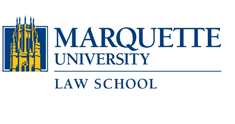Abstract
Many studies of exonerations find that erroneous eyewitness identifications play a part in over 75% of all wrongful convictions. These studies have led to numerous proposals for reform of police procedures, yet we see surprisingly little progress toward minimizing eyewitness-identification error, a major cause of failure in the criminal justice systems of this country. This Article presents the findings of an empirical study of recent case law in which defendants challenge the legality of the eyewitness identification procedures. The study involved a review of all cases within the calendar year ending in April 8, 2009 in which state appellate courts issued opinions and in which the suggestiveness of eyewitness identification procedures were challenged. In the cases surveyed, only a small percentage of the police investigations followed any of the recommended procedures and usually not the most critical procedures. The overwhelming majority of departments in the cases surveyed followed the same suggestive procedures that have contributed to misidentifications and wrongful convictions in the past. This survey does not tell us much about the universe of cases in which eyewitness identification plays a role. It tells us nothing, for example, about the procedures actually followed in departments throughout the country. Thus, we cannot draw any sweeping conclusions about overall police practices from what effectively is just a small sample. To obtain such information, one would have to conduct a massive survey of the tens of thousands of independent police agencies throughout the country. What this survey does provide, however, is a glimpse at a relatively small number of cases in which defense lawyers have asserted mistaken eyewitness identification both at trial and on appeal. Even this limited view is not encouraging. As this Article will demonstrate, many of the same problems and practices that have contributed to erroneous identifications in the past continue to present themselves in cases decided within the past year. How did the appellate courts respond to the challenges to the eyewitness identification evidence in these cases? In this study, none of the courts invoked state constitutional law or evidentiary rules to reject the suggestive practices decried by reformers. The courts do not exclude eyewitness identification testimony, even when it is obtained under circumstances that have been shown scientifically to be prone to error, nor do they find such testimony insufficient to support a verdict without additional corroborating evidence. Indeed, many of the appellate opinions continue to view the eyewitness’s degree of certainty as an indicator of reliability, despite the fact that social science research proves otherwise. Meanwhile, the courts often overlook other indicia of unreliability. Just as in the days before the reform was proposed, the study shows that dubious eyewitness identification evidence continues to be admitted, and appellate courts continue to turn a blind eye to defense challenges based on suggestiveness and unreliability of such evidence. If one read only the recent case law challenging suggestive identification procedures, one might get the impression that the innocence reform movement – and the exoneration of hundreds of innocent persons – never happened.
Repository Citation
Sandra Guerra Thompson,
Judicial Blindness to Eyewitness Misidentification,
93 Marq. L. Rev. 639
(2009).
Available at: https://scholarship.law.marquette.edu/mulr/vol93/iss2/11
